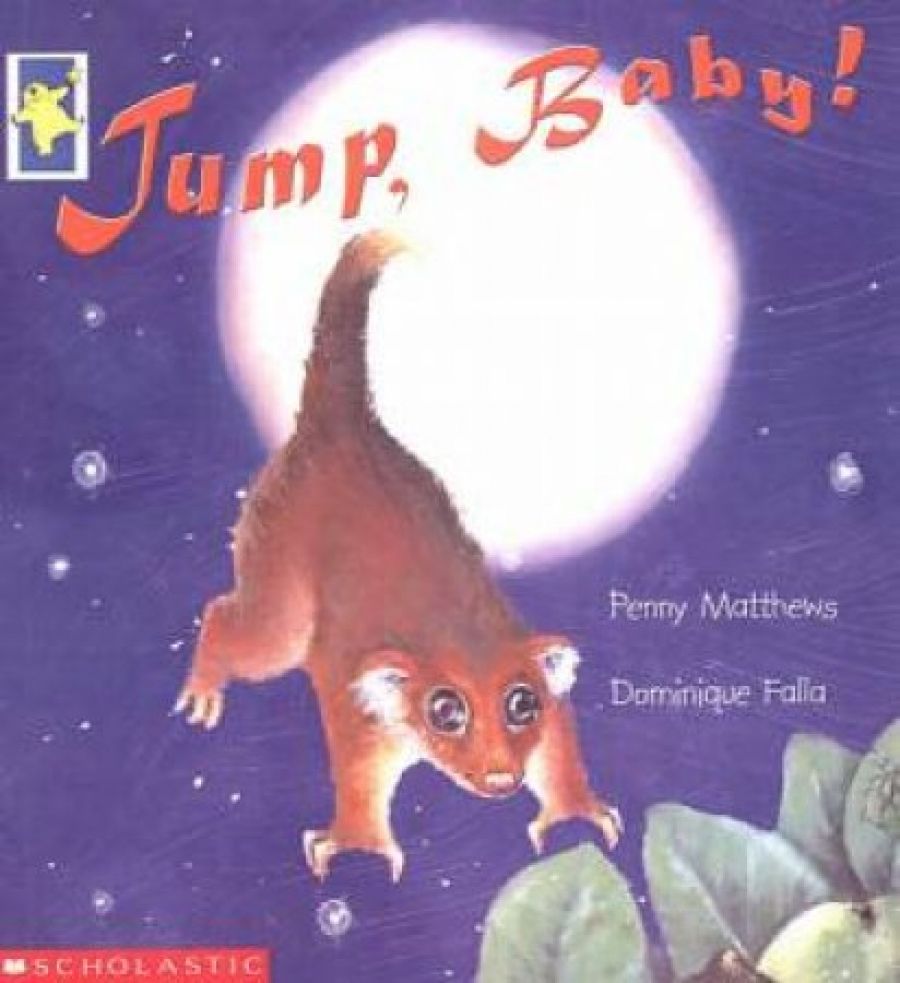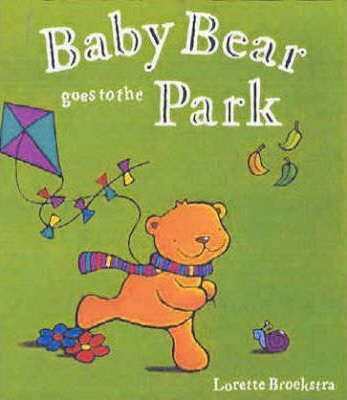
- Free Article: No
- Contents Category: Children's Fiction
- Review Article: Yes
- Article Title: Flying to maturity
- Online Only: No
- Custom Highlight Text:
Pigs don’t fly, but dragons and kites do, and possums can jump, which is perhaps just as scary if you’re a little one. These four picture books deal with flight, their authors and illustrators using more or less imaginary elements in the process.
- Book 1 Title: Jump, Baby!
- Book 1 Biblio: Omnibus Books, $14.95 pb, 32 pp
- Book 2 Title: Baby Bear Goes to the Park
- Book 2 Biblio: Lothian, $13.95 pb, 32 pp
- Book 2 Cover Small (400 x 600):

As we all – even the youngest – know, Pigs Don’t Fly! But they do love ‘to wallow in the mud’. This is a flap book, where each opening cleverly uses the bits of animals that have been left behind on the turn in the new pictures of the same animals doing what they naturally do. They all change from doing something fantastic (roosters swimming, goats swinging) to their natural behaviour – pecking or chewing. It is not only the animals that are changed, but objects too: the ducks’ pond, the horses’ slide, the chooks’ buckets. And there, at the end, is a little girl and her father reading this actual book together. ‘I love to read. Can we read it all again?’ Indeed, it would do for a very first reading-alone book. Even the youngest reader will enjoy identifying farm animals and chuckling at their ridiculous antics. This book foregrounds the imagination, not least in the infinite regress of the character in the book reading the actual book itself. The fantasy elements are depicted for the younger readers, then replaced with the naturalistic.
The illustration styles in these four books could not be more different. For the younger audience, Matt Cosgrove has chosen strong, simple, flat predictable colours. I particularly liked the roosters’ page, where their swimming pool becomes two buckets. Three years ago, Lorette Broekstra’s illustrations won her a Crichton Award with her first Baby Bear book. As in Baby Bear at the Zoo, each page has a strong but interesting background colour and a clearly delineated border. Different things cross this border: in the new book, it is almost always one point of the kite or perhaps a bit of its tail. Baby Bear resembles Pooh Bear as he holds onto the string with his paws up. (There is just an echo of Shepard’s classic pictures.) Again, the colours are flat, no shading, with strong black outlines. There is no foregrounding of impossibility here. The child listener is expected to take the tale quite literally. After all, if bears can talk and hang out washing, presumably they could be carried off on a kite string, too.
The wood collage pictures in Dominique Falla’s lavish Woodlore (1995) made that an Honour Book in the Eve Pownall Award. In Jump, Baby! he uses acrylic paint and coloured pencils. The illustrations, though realistic and attractive, lack the charm and complexity of the collage pictures. There is little context, except the possums’ fruit trees. The characters are those familiar everyday native creatures with whom we share our urban environment. The animals’ expressions are telling, without compromising their animal appearance – a difficult skill to master.
The Dragon Machine is for older children. Wayne Anderson’s pictures are in subtle tones, mainly greys, with lots of fine detail. Children will enjoy spotting the dragons in unlikely places and watching them get up to mischief (for instance, in the library). The wonderfully complex machine that George creates is a delight to investigate with its pipes, wings, and cogs. No wonder the dragons follow it! These are quite tiny dragons, and this is presumably why they remain unnoticed by adults. And the question of imagination is left open. When George sees his new puppy as a dragon, does this mean that he imagined them all, to assuage his loneliness (similar to the boy in Libby Gleeson’s An Ordinary Day, last year’s CBC Picture Book winner)? Is his wind-up toy dragon the only real one? A real ‘dragon machine’ in contrast to the flying one he builds?
These picture books tackle the universal dream of flying in quite different, though equally satisfying, ways.


Comments powered by CComment